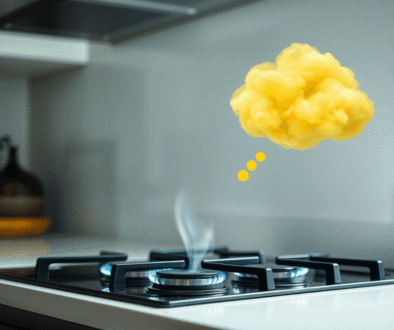Signs of Stroke: How to Spot Trouble and Act Fast
Every second counts when the brain is starved of blood. Stroke can steal speech, movement, and memories in the blink of an eye. Early signs, like a drooping face or weak arm, might seem harmless at first. But acting fast can mean the difference between full recovery and lifelong disability.
We all need to know these warning signs, not just for ourselves but also for friends and loved ones. By spotting the first hint of trouble, we give doctors a fighting chance to help. In this guide, we’ll show how to recognize a stroke as it’s happening—and why quick action can save a life.
What Happens During a Stroke
When the brain is suddenly cut off from its lifeline, everything changes in moments. Each second without blood flow means brain cells are at risk. Let’s look at what actually happens during a stroke and why acting fast matters so much.
Blood Flow Gets Blocked or a Vessel Breaks
A stroke starts when blood can’t reach parts of the brain. This can happen in two main ways:
- Ischemic stroke: This is the most common type. A blood clot or fatty deposit blocks a blood vessel in the brain. Oxygen and nutrients can’t get through, so brain cells start to die. Most strokes fall into this category.
- Hemorrhagic stroke: Here, a blood vessel in the brain bursts and bleeds. Pressure from the extra blood damages nearby brain tissue. This type is less common, but often more severe.
There’s also a warning sign called a transient ischemic attack (TIA). It’s sometimes called a “mini-stroke.” Blood flow to the brain gets blocked briefly but comes back on its own. TIAs don’t cause lasting harm, but they are a red flag for bigger strokes ahead.
Brain Cells Start to Die
Once blood flow stops, brain cells lose oxygen fast. They can begin to die within minutes. The more time that passes, the more damage spreads. The affected area determines what body functions or senses get hurt. Damage on one side of the brain often affects the opposite side of the body.
Think of the brain as a busy city. Traffic (blood flow) keeps everything moving. A crash (blood clot) or a water main break (burst vessel) can shut down blocks of that city. If help doesn’t arrive, important buildings (brain regions) stop working for good.
Body Functions Change in Moments
Because the brain controls so much, a stroke can cause sudden, serious symptoms. Here’s what changes can happen right away:
- Weakness, numbness, or paralysis (most often on one side)
- Slurred or confused speech
- Drooping face
- Loss of vision or double vision
- Severe headache
- Trouble walking or staying balanced
The brain area starving for blood decides which abilities are lost. If speech centers are hit, talking becomes hard. If movement centers are hurt, arms or legs can’t work right.
The Clock Is Ticking
Every minute without treatment means higher risk of permanent loss. Quick medical care can clear a clot, control bleeding, or keep symptoms from getting worse. Treatments like clot-busting drugs and surgery work best when started right away.
A stroke is not just a “bad headache.” It’s the brain’s emergency cry for help. By knowing what happens during a stroke, we stay ready to act in time.
Recognizing the Core Signs: Remember BE FAST
Not all stroke signs are easy to spot, but the BE FAST checklist helps us catch what matters most. BE FAST stands for Balance, Eyes, Face, Arm, Speech, and Time. Each letter points to a key symptom. If any of these appear suddenly, don’t wait—seconds count.
Let’s break down what each sign looks like in real life and what to do if we spot one.
Balance: Sudden Loss or Dizziness
A sudden loss of balance or feeling dizzy can be an early warning sign. This isn’t the gentle spinning from getting up too fast. It’s more like the floor tilting beneath our feet or the world spinning for no clear reason.
- Losing the ability to walk straight
- Stumbling, swaying, or feeling off-kilter
- Sudden trouble with coordination
If someone can’t stand without leaning or falls when trying to walk, take it seriously. These changes can come on fast and out of the blue.
Eyes: Sudden Vision Changes
Stroke can strike the eyes just as suddenly as it does the rest of the body. Watch for new vision problems that weren’t there minutes ago.
- Blurred, doubled, or lost vision in one or both eyes
- Inability to see out of one side
- Sudden blindness, even if it fades in minutes
Ask if street signs, faces, or objects suddenly look fuzzy or disappear. These changes point to the brain’s visual center losing blood flow.
Face: Drooping or Numbness
When a stroke hits, one side of the face often droops or loses feeling. This is often the most obvious sign.
- One side of the mouth or cheek droops when smiling
- Numbness or weakness on just one side
- Smile looks uneven or lopsided
Try asking the person to smile wide. If their grin looks crooked or they can’t lift one side, a stroke is likely.
Arms: Weakness or Inability to Lift One Arm
Sudden arm weakness is another red flag. Stroke can leave an arm limp, heavy, or numb—sometimes without warning.
- Inability to raise both arms to the same height
- One arm drifts downward when held up
- Numbness, tingling, or sudden inability to grip
Have them lift both arms out straight and hold. If one arm sags or falls, act fast.
Speech: Slurring or Confusion
Stroke often attacks language. Words get tangled, speech sounds slurred, or it’s tough to understand what’s being said.
- Jumbled, slurred, or garbled words
- Sudden confusion or trouble finding words
- Wrong word usage or nonsensical sentences
Ask the person to say a simple phrase like “The sky is blue.” If the reply sounds off or they’re searching for words, call for help.
Time: Act Fast
The key to surviving stroke and reducing lifelong damage is speed. Every second lost means more brain cells at risk.
- Call emergency services at once if you spot any of these signs
- Don’t wait or second-guess symptoms
- Quick action means better odds of recovery
Never wait for symptoms to pass. Even if things get better, get medical help right away. Fast action helps doctors stop the stroke, protect the brain, and start lifesaving treatment.
Other Common Warning Signs
Some stroke signs are easy to spot. Others sneak in quietly, barely noticed. It’s easy to think only of the obvious symptoms, but stroke can also hide behind less familiar changes. By recognizing these warning signals, we can act quickly and give ourselves or a loved one the best chance of recovery.
Sudden Severe Headache
A blinding headache with no clear cause can signal a stroke, especially if it comes on fast. This isn’t like a normal headache or even a migraine. It may feel like the worst pain ever, out of nowhere.
- Often described as “the worst headache of my life”
- Can hit while resting or even sleeping
- Not eased by usual pain relievers
- May be joined by nausea or vomiting
If this happens, seek help right away—even if the pain fades.
Dizziness, Loss of Balance, or Trouble Walking
Not all strokes cause numbness or weakness. Sometimes, the first sign is a spinning room or legs that won’t cooperate.
- Feeling unsteady while standing or walking
- Falling with no warning or clear cause
- New trouble with coordination—like missing the doorknob or knocking over a cup
- Difficulty standing upright or feeling like the world is tilting
These changes can feel strange and sudden, not like being tired or dehydrated.
Sudden Confusion or Trouble Understanding
Stroke can make the world feel scrambled. Words may not make sense or simple facts might feel jumbled.
- Trouble following a conversation
- Struggling to understand what others are saying
- Responding with blank stares or the wrong answers
- Abrupt memory gaps, even for close friends or family
A sudden fog over the mind, especially in someone who is usually sharp, is cause for worry.
Sudden Nausea or Vomiting
A wave of nausea or vomiting, with no warning and no clear reason, can be a warning sign. It’s more common with strokes that affect the back of the brain (the cerebellum or brainstem).
- Nausea strikes without signs of stomach illness
- Vomiting comes with dizziness, headache, or confusion
- No fever, stomach pain, or signs of infection
Never write this off as a simple stomach bug if it arrives with other stroke symptoms.
Loss of Consciousness or Fainting
Strokes can sometimes cause a sudden blackout or faint. If someone collapses or seems to pass out briefly, stroke could be the reason.
- Brief unexplained loss of alertness
- Episodes of fainting, even if they recover quickly
- Feeling lightheaded or about to pass out, especially paired with numbness, weakness, or headache
Even short spells are medical emergencies if paired with stroke signs.
Sudden Seizures
While rare, some strokes can trigger seizures—sudden jerking movements, loss of awareness, or muscle stiffening.
- Involuntary shaking or twitching
- Losing control of movements or staring into space
- Periods of confusion after shaking stops
Seizures, especially in adults with no prior history, always need fast medical attention.
Less Typical Signs
Besides classic symptoms, these less common changes can signal trouble:
- Sudden numbness or tingling that fades but returns
- Unexplained weakness in the legs
- Hiccups that won’t go away, often with chest or throat pain
- Shortness of breath or chest pain (in rare stroke types)
Stroke symptoms may not fit a checklist. Any sudden, strange change—especially paired with other signs—means it’s time to seek help. By learning both the familiar and subtle clues, we keep ourselves and those we care about safer.
Who Is Most at Risk?
Stroke can strike anyone, but some of us face much higher chances than others. Knowing who is most likely to have a stroke helps us act sooner if problems start. Risk stacks up from a mix of age, background, health history, and daily habits. Let’s break down the main groups affected most and the reasons they’re at higher risk.
Age: Risk Rises as We Get Older
Getting older is the biggest risk factor for stroke. Our risk doubles every decade after 55. The body’s blood vessels stiffen with age. Bad cholesterol and high blood pressure can build up over many years, setting the stage for trouble later on.
- Most strokes happen to people over 60, but they’re possible at any age
- Risk grows faster past age 65
Race and Ethnicity
Some groups face higher stroke rates because of genetics, health trends, and access to care.
- Black adults: More likely to have a stroke and to die from it, partly due to higher blood pressure and diabetes rates
- Hispanic, Alaska Native, and American Indian adults: Higher risk than White adults
- South Asian and Pacific Islander people: Increased risk compared to other groups
These differences reflect a complex mix of medical risk factors and social issues, including healthcare access and stress.
Sex: Men and Women
Both men and women face high stroke risk, but it looks a bit different.
- Men get strokes more often at younger ages
- Women are more likely to die from stroke, often because they live longer and are older when they have one
- Pregnancy, birth control pills, and hormone therapy can add risk for women
Family History and Genetics
Strokes sometimes run in families. If a close relative—parent, brother, or sister—has had a stroke, our chances go up. Some inherited health conditions can also make blood more likely to clot or vessels more prone to damage.
Medical Conditions That Make Stroke More Likely
Certain health problems raise risk far beyond average. Let’s look at the key culprits:
- High blood pressure: The #1 cause. It weakens and damages arteries over time.
- Diabetes: Increases fatty buildup in blood vessels, making clots more likely.
- High cholesterol: Leads to narrowed or hardened arteries.
- Heart problems: Irregular heartbeats (like atrial fibrillation) and heart failure send blood clots to the brain.
- Sickle cell disease: Mostly affects Black children, thickening blood and raising stroke risk.
- Obstructive sleep apnea: Linked to high blood pressure and heart strain.
Lifestyle Choices That Add Risk
Everyday habits shape our odds. Some raise concern fast:
- Smoking: Damages blood vessels and nearly doubles stroke risk
- Heavy drinking: Raises blood pressure and can trigger bleeding in the brain
- Poor diet: Too much salt, saturated fats, and sugar spikes risk factors
- Little physical activity: Leads to obesity, high blood pressure, and diabetes
- Drug abuse: Cocaine, meth, and other stimulants can trigger sudden stroke, even in young people
Special Risks for Women
Women have unique factors to watch. Hormonal changes from birth control, pregnancy, or menopause treatments can encourage clots. Preeclampsia, a form of high blood pressure during pregnancy, raises stroke risk later in life.
Social and Economic Factors
Where we live, our income, and healthcare access all play a part. People in rural areas often get slower treatment and have higher death rates. Stress from hard living or job worries can push blood pressure higher, too.
Anyone can have a stroke, but some of us are much more at risk. By knowing who these groups are and what pushes risk higher, we put ourselves in a better spot to spot early signs and take action.
What To Do If You Spot Stroke Signs
Spotting stroke signs can send adrenaline through our veins. When a loved one’s face drops or their words turn to mush, panic can hit. But staying calm and acting fast is what saves lives. Quick choices in those first minutes make all the difference. Here’s a step-by-step guide on what to do if we’re the ones to spot those red flags.
Call Emergency Services Without Delay
The moment we suspect a stroke, we call 911 or our local emergency number. This is always step one—no waiting, no driving the person ourselves if we can avoid it. Paramedics start care right away, alert hospitals, and shave down the critical window for brain-saving treatment. Even if symptoms improve, we still call. Acting fast gives doctors the best shot at preventing lasting damage.
Note the Time Symptoms Started
Time is the most important detail for doctors. Write down or remember exactly when stroke signs first appeared—down to the minute, if possible. This timing helps the hospital decide on treatments, like clot-busting medication, that only work within a few hours. Guessing isn’t enough; details matter. Make a note on our phone or tell someone else so it doesn’t get lost in the chaos.
Keep the Person Safe and Comfortable
As we wait for help, we don’t move someone unless they’re in danger (like near stairs or traffic). If the person is awake and safe where they are, we gently help them lie down. Elevate their head slightly if possible and loosen any tight clothes—this helps blood flow and comfort. If vomiting or confused, turn them to their side to prevent choking.
Don’t Offer Food, Drink, or Medicine
We hold off on giving food, drink, or any pills, even if asked. A stroke can make swallowing hard or impossible, raising the risk of choking. Doctors at the hospital will handle medication and fluids safely once they assess the patient.
Be Ready to Give CPR if Needed
If the person stops breathing or loses pulse, we start CPR and keep it up until paramedics arrive. Fast chest compressions can keep blood flowing to the brain. If we’re unsure how, a 911 dispatcher can walk us through it over the phone.
Make Note of Symptoms and Changes
As we wait for help, we watch carefully. Jot down anything new—like changes in speech, movement, or alertness. Were they able to lift an arm? Did their smile droop more? Sharing these details with paramedics ensures nothing gets missed.
Stay Calm and Reassure
We keep our voice steady and offer reassurance. Let them know help is on the way. Stress and fear can make everything worse for someone in the middle of a stroke. Calm surroundings make a hard moment feel safer.
Summary of Steps
Here’s a quick list we can keep in mind:
- Call 911 immediately.
- Note the time symptoms started.
- Keep the person safe and comfortable.
- Do not give food, drink, or medication.
- Be ready to do CPR if needed.
- Monitor and record symptoms.
- Stay calm and supportive.
Remember, hesitation wastes precious brain cells. Even if we’re worried about a false alarm, doctors would always rather be safe than sorry. The minutes we save can mean a lifetime given back.
Conclusion
We remember the early moments matter most when stroke strikes. Quick action saves speech, movement, even life itself. Memorizing the signs—balance changes, eye trouble, face droop, arm weakness, slurred speech, and the need to call for help—keeps us ready.
Passing this knowledge on gives our families and friends a better chance if stroke hits close to home. Simple steps and fast choices can turn panic into hope.
Let’s spread the word, carry these signs with us, and never hesitate when every second counts. Thank you for learning with us—your awareness can save a life.


